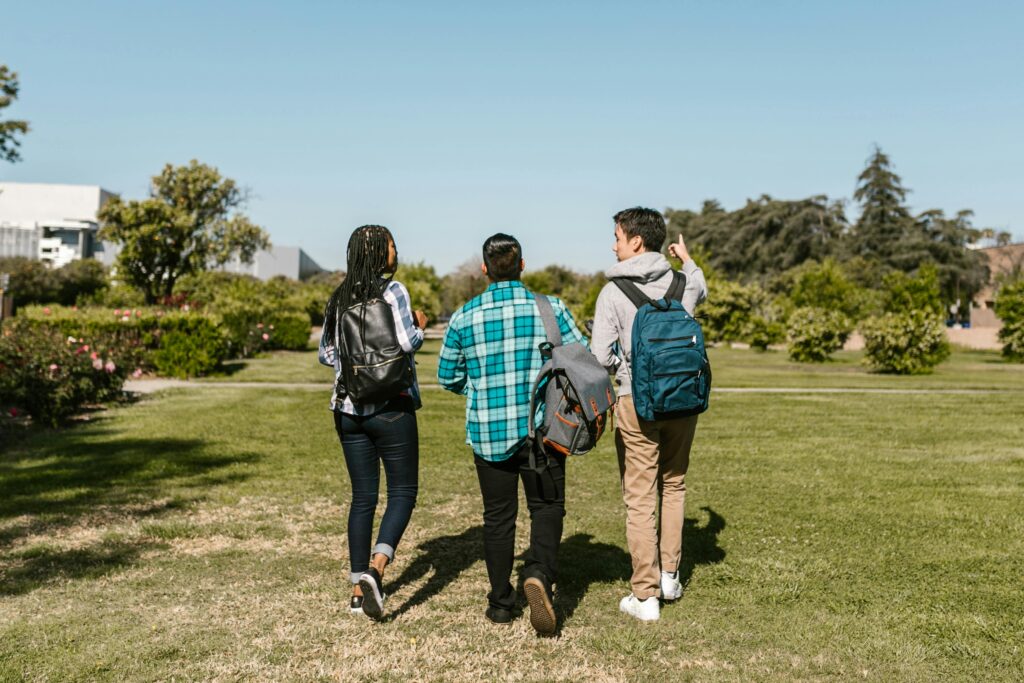The COVID-19 pandemic has profoundly disrupted educational systems globally. To mitigate the spread of the virus, governments worldwide mandated the closure of educational institutions. These closures affected not only students, teachers, and families but also triggered extensive social and economic repercussions. The shutdowns exposed and intensified systemic challenges such as student debt, food insecurity, disparities in digital access, and homelessness. Marginalized children and low-income families bore the brunt of these impacts, facing disrupted education, limited food access, childcare hardships, and financial pressures stemming from job losses. In response, education authorities and governments adopted numerous strategies to ensure smoother transitions and continued learning amid these difficult circumstances. Below, we examine the significant effects of COVID-19 on school and college students:
The impact of COVID-19 on school and college students has been transformative, reshaping the educational landscape in unprecedented ways. The sudden transition to online learning presented multiple challenges, including sustaining concentration amid uncertainty. Remote classes, initially considered temporary, soon became the norm—testing students’ adaptability and resilience. The absence of in-person interaction affected academic performance as well as students’ social and emotional well-being. Balancing coursework with pandemic-induced anxieties proved demanding; however, students showed remarkable adaptability by embracing virtual collaboration, innovative learning tools, and fostering supportive online communities. These experiences have forged a generation characterized by resilience, flexibility, and a strong capacity to adapt to unforeseen challenges.
Schools Remain Sensitive to Student Needs
The pandemic exposed vulnerabilities within educational systems worldwide—from government bodies to local school districts. Many schools and universities initially struggled to implement comprehensive distance learning programs rapidly. To bridge the digital divide, some institutions distributed laptops, tablets, and mobile hotspots to students lacking reliable access to technology, enabling continued online education. Despite these efforts, many students faced ongoing challenges such as the need for assignment assistance and timely academic support.
Schools encouraged students to maintain communication with administrative offices that remained operational remotely, offering essential resources and guidance. Educators emphasized the importance of active dialogue between students and instructors, highlighting that success in online or hybrid learning environments depends on consistent engagement and dedication.
Students Anxious About Internet Access and Housing
Campus closures posed significant challenges, comparable to eviction notices for many students who needed to secure alternative housing and resources quickly. The rapid pivot to online learning magnified the digital divide—the gap between students with reliable internet and devices versus those without. As of 2024, over 90% of Americans use the internet; however, approximately 75% own a personal computer. While smartphones offer some connectivity, they often fall short for complex tasks such as video conferencing, standardized testing, or essay writing.
Many students lost access to campus health and wellness services, while those employed on campus lost crucial income sources. Students who depended on campus housing faced sudden housing insecurity. Out-of-state and international students confronted additional hurdles, including travel restrictions and visa uncertainties, which, in some cases, forced them to leave the country or hindered their ability to participate fully in their studies online.
The Shift to Online Education Has Been Accelerated
The COVID-19 crisis accelerated the adoption of distance education across all academic levels—from K-12 to higher education institutions. Thousands of schools were compelled to close their physical campuses and transition abruptly to remote learning, marking a major transformation in education delivery methods. Prior to the pandemic, online education was growing steadily; for instance, college enrollment in online courses increased consistently for over 14 years, according to the Online Learning Consortium.
Nonetheless, many two- and four-year colleges were initially hesitant to expand online offerings in 2019. The sudden shift exposed gaps in digital infrastructure and support services as schools scrambled to address equity issues and maintain instructional quality. Student demand for online homework help and academic support surged, underscoring the need for institutions to enhance remote learning readiness.
COVID and Campus Closures Pose Threats to Students
Many campus closures were enacted proactively to prevent COVID-19 outbreaks, often before confirmed cases surfaced on campuses. The dense and dynamic student populations made enforcement of social distancing challenging, rendering campuses potential hotspots for viral transmission. Research early in the pandemic revealed how universities could facilitate rapid spread if preventive protocols were insufficiently applied.
Surveys also highlight a significant increase in depression and anxiety among students. The pandemic’s prolonged stressors have severely affected student mental health, with a growing number of undergraduates reporting elevated emotional distress and overwhelming psychological burdens.
Read More: Why College Should be Free: Pros and Cons
Conclusion
The impact of COVID-19 continues to reverberate throughout education systems worldwide, including in India and beyond. Pandemic-induced lockdowns have disrupted academic progress and everyday life for millions of students. This article has explored the multifaceted effects of COVID-19 on students, fostering greater awareness and empathy for those navigating these unprecedented circumstances.
If you want to learn more about Buy The Best Kona Coffee Beans, please visit our Health category for detailed resources, updates, and guidance on education in the post-pandemic era.
Frequently Asked Questions (FAQs)
The pandemic has significantly elevated levels of anxiety, depression, and stress among students. Isolation from peers, uncertainty regarding academic progress, and health concerns have contributed to widespread mental health challenges. Many students reported decreased motivation and feelings of social disconnection during remote learning periods.
Schools and universities have implemented initiatives such as distributing laptops, tablets, and mobile hotspots to students lacking access. They have expanded online resource availability and provided training for both students and educators to effectively use virtual learning platforms, thereby improving remote education accessibility.
The effectiveness of online classes varies based on multiple factors including course design, student learning styles, and engagement levels. While online education offers flexibility and accessibility, it requires strong self-discipline and active participation. Certain hands-on experiences and social interactions may be less effectively replicated online, making hybrid models increasingly popular.
Many institutions collaborate with local organizations to provide temporary housing, emergency financial aid, and food assistance for students impacted by campus closures. Additionally, government programs and nonprofit advocacy groups offer support services tailored to students experiencing homelessness or housing instability.
Students can maintain engagement by joining virtual study groups, communicating regularly with instructors, utilizing online campus resources such as counseling and tutoring, and establishing consistent daily routines. Active participation in digital communities helps counter isolation and supports academic success in remote settings.


